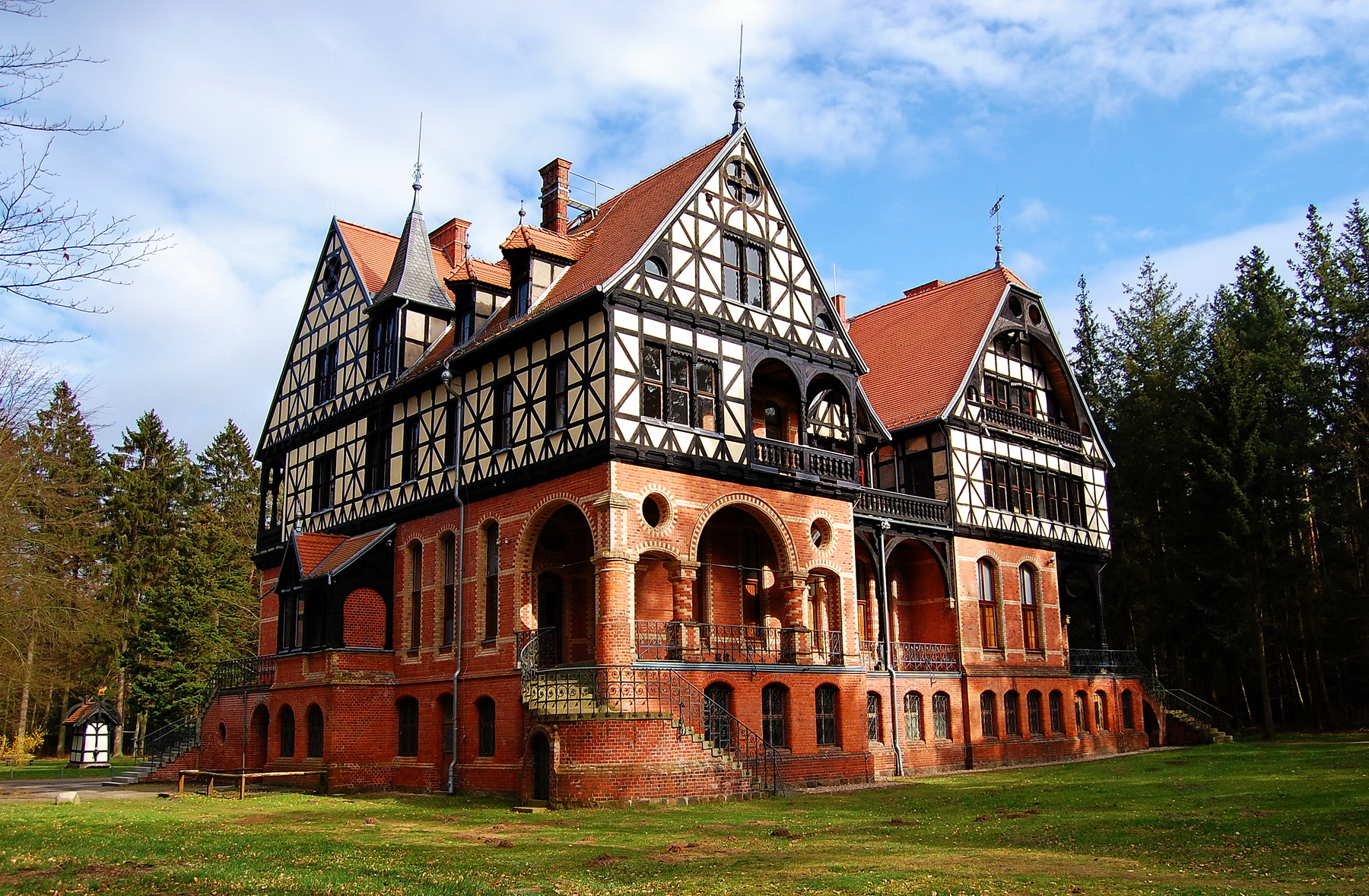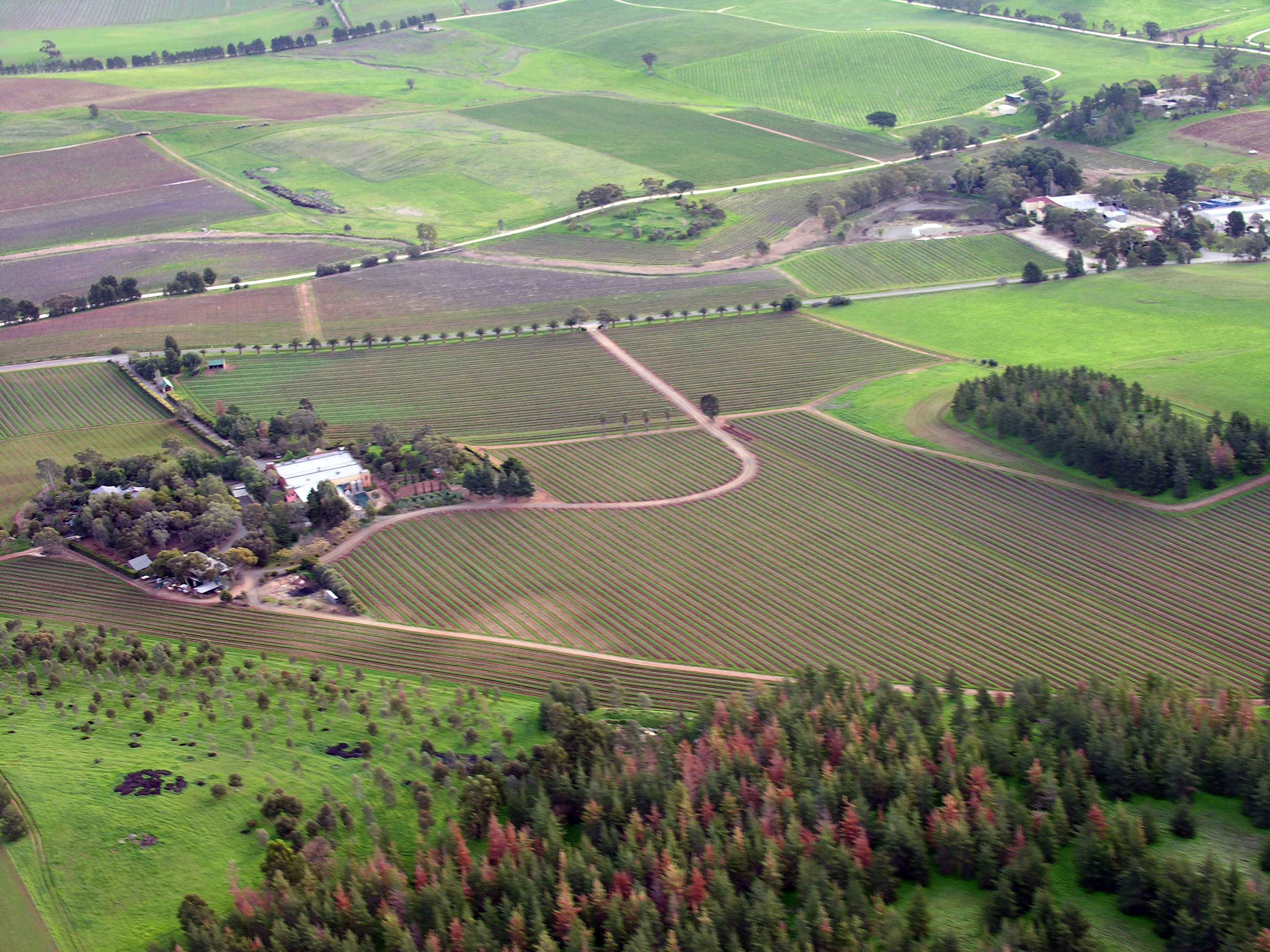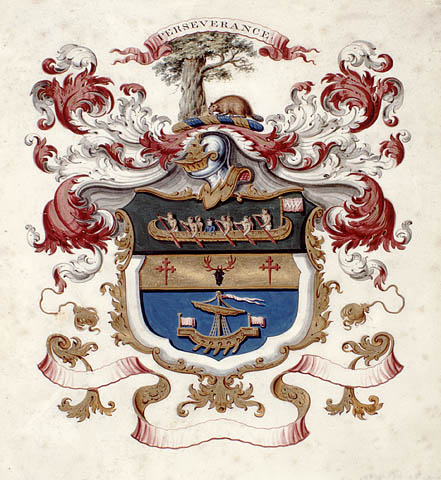|
Ravenscrag, Montreal
Ravenscrag is a former mansion that was built between 1860 and 1863 for Hugh Allan (later Sir Hugh Allan) in the Golden Square Mile of Montreal, Quebec. It stands at 1025 Pine Avenue West at the top of McTavish Street, on the slopes of Mount Royal. Upon its completion in 1863, the mansion of 72 rooms surpassed "in size and cost any dwelling-house in Canada," exceeding Dundurn Castle, built by Sir Allan MacNab in 1835. In 1940, Allan's second son, Sir Montagu Allan, donated the property to the Royal Victoria Hospital for use as a medical facility, when its famously sumptuous interior was completely stripped and gutted. Today, the building is known as the Allan Memorial Institute and is part of the McGill University Faculty of Medicine. Although reduced in size and lacking its former grandeur, Ravenscrag continues to dominate what remains of the Golden Square Mile today. Construction In 1860, Allan purchased fourteen acres on the slopes of Mount Royal for $10,000, from t ... [...More Info...] [...Related Items...] OR: [Wikipedia] [Google] [Baidu] |
Mansion
A mansion is a large dwelling house. The word itself derives through Old French from the Latin word ''mansio'' "dwelling", an abstract noun derived from the verb ''manere'' "to dwell". The English word '' manse'' originally defined a property large enough for the parish priest to maintain himself, but a mansion is no longer self-sustaining in this way (compare a Roman or medieval villa). ''Manor'' comes from the same root—territorial holdings granted to a lord who would "remain" there. Following the fall of Rome, the practice of building unfortified villas ceased. Today, the oldest inhabited mansions around the world usually began their existence as fortified houses in the Middle Ages. As social conditions slowly changed and stabilised fortifications were able to be reduced, and over the centuries gave way to comfort. It became fashionable and possible for homes to be beautiful rather than grim and forbidding allowing for the development of the modern mansion. In British Engl ... [...More Info...] [...Related Items...] OR: [Wikipedia] [Google] [Baidu] |
Royal Victoria Hospital, Montreal
The Royal Victoria Hospital (RVH) (french: Hôpital Royal Victoria), colloquially known as the "Royal Vic" or "The Vic", is a hospital in Montreal, Quebec, Canada. It forms the biggest base hospital of the McGill University Health Centre (MUHC), which is affiliated with McGill University. The hospital was established in 1893 and was based at Pine Avenue, now known as the Legacy site, until 2015, when major hospital operations were moved to the Glen site (1001 Décarie Boulevard), named for the former Glen railway yards. The future uses of the Legacy site are now under study and it seems likely that the site, which is adjacent to its main campus, will be taken over by McGill University. History The Royal Victoria Hospital was established in 1893 in the historic Golden Square Mile through donations by two public-spirited Scottish immigrants, the cousins Donald Smith, 1st Lord Strathcona, and George Stephen, 1st Lord Mount Stephen. In 1887, they announced a joint gift of C$ ... [...More Info...] [...Related Items...] OR: [Wikipedia] [Google] [Baidu] |
Queen Victoria
Victoria (Alexandrina Victoria; 24 May 1819 – 22 January 1901) was Queen of the United Kingdom of Great Britain and Ireland from 20 June 1837 until her death in 1901. Her reign of 63 years and 216 days was longer than that of any previous British monarch and is known as the Victorian era. It was a period of industrial, political, scientific, and military change within the United Kingdom, and was marked by a great expansion of the British Empire. In 1876, the British Parliament voted to grant her the additional title of Empress of India. Victoria was the daughter of Prince Edward, Duke of Kent and Strathearn (the fourth son of King George III), and Princess Victoria of Saxe-Coburg-Saalfeld. After the deaths of her father and grandfather in 1820, she was raised under close supervision by her mother and her comptroller, John Conroy. She inherited the throne aged 18 after her father's three elder brothers died without surviving legitimate issue. Victoria, a constitu ... [...More Info...] [...Related Items...] OR: [Wikipedia] [Google] [Baidu] |
Osborne House
Osborne House is a former royal residence in East Cowes, Isle of Wight, United Kingdom. The house was built between 1845 and 1851 for Queen Victoria and Albert, Prince Consort, Prince Albert as a summer home and rural retreat. Albert designed the house himself, in the style of an Italian Renaissance palazzo. The builder was Thomas Cubitt, the London architect and builder whose company built the main facade of Buckingham Palace for the royal couple in 1847. An earlier smaller house on the site was demolished to make way for a new and far larger house, though the original entrance portico survives as the main gateway to the walled garden. Queen Victoria died at Osborne House on 22 January 1901, aged 81. Following her death, King Edward VII, who had never liked Osborne, presented the house to the state on the day of Coronation of Edward VII and Alexandra, his coronation, with the royal pavilion being retained as a private museum to Victoria. From 1903 to 1921, part of the estate a ... [...More Info...] [...Related Items...] OR: [Wikipedia] [Google] [Baidu] |
England
England is a country that is part of the United Kingdom. It shares land borders with Wales to its west and Scotland to its north. The Irish Sea lies northwest and the Celtic Sea to the southwest. It is separated from continental Europe by the North Sea to the east and the English Channel to the south. The country covers five-eighths of the island of Great Britain, which lies in the North Atlantic, and includes over 100 smaller islands, such as the Isles of Scilly and the Isle of Wight. The area now called England was first inhabited by modern humans during the Upper Paleolithic period, but takes its name from the Angles, a Germanic tribe deriving its name from the Anglia peninsula, who settled during the 5th and 6th centuries. England became a unified state in the 10th century and has had a significant cultural and legal impact on the wider world since the Age of Discovery, which began during the 15th century. The English language, the Anglican Church, and Eng ... [...More Info...] [...Related Items...] OR: [Wikipedia] [Google] [Baidu] |
Palazzo
A palace is a grand residence, especially a royal residence, or the home of a head of state or some other high-ranking dignitary, such as a bishop or archbishop. The word is derived from the Latin name palātium, for Palatine Hill in Rome which housed the Imperial residences. Most European languages have a version of the term (''palais'', ''palazzo'', ''palacio'', etc.), and many use it for a wider range of buildings than English. In many parts of Europe, the equivalent term is also applied to large private houses in cities, especially of the aristocracy; often the term for a large country house is different. Many historic palaces are now put to other uses such as parliaments, museums, hotels, or office buildings. The word is also sometimes used to describe a lavishly ornate building used for public entertainment or exhibitions such as a movie palace. A palace is distinguished from a castle while the latter clearly is fortified or has the style of a fortification, whereas a ... [...More Info...] [...Related Items...] OR: [Wikipedia] [Google] [Baidu] |
Villa
A villa is a type of house that was originally an ancient Roman upper class country house. Since its origins in the Roman villa, the idea and function of a villa have evolved considerably. After the fall of the Roman Republic, villas became small farming compounds, which were increasingly fortified in Late Antiquity, sometimes transferred to the Church for reuse as a monastery. Then they gradually re-evolved through the Middle Ages into elegant upper-class country homes. In the Early Modern period, any comfortable detached house with a garden near a city or town was likely to be described as a villa; most survivals have now been engulfed by suburbia. In modern parlance, "villa" can refer to various types and sizes of residences, ranging from the suburban semi-detached double villa to, in some countries, especially around the Mediterranean, residences of above average size in the countryside. Roman Roman villas included: * the ''villa urbana'', a suburban or country sea ... [...More Info...] [...Related Items...] OR: [Wikipedia] [Google] [Baidu] |
Liverpool
Liverpool is a City status in the United Kingdom, city and metropolitan borough in Merseyside, England. With a population of in 2019, it is the List of English districts by population, 10th largest English district by population and its ESPON metropolitan areas in the United Kingdom, metropolitan area is the fifth largest in the United Kingdom, with a population of 2.24 million. On the eastern side of the Mersey Estuary, Liverpool historically lay within the ancient Hundred (county division), hundred of West Derby (hundred), West Derby in the county of Lancashire. It became a Borough status in the United Kingdom, borough in 1207, a City status in the United Kingdom, city in 1880, and a county borough independent of the newly-created Lancashire County Council in 1889. Its Port of Liverpool, growth as a major port was paralleled by the expansion of the city throughout the Industrial Revolution. Along with general cargo, freight, and raw materials such as coal and cotton ... [...More Info...] [...Related Items...] OR: [Wikipedia] [Google] [Baidu] |
Countryside
In general, a rural area or a countryside is a geographic area that is located outside towns and cities. Typical rural areas have a low population density and small settlements. Agricultural areas and areas with forestry typically are described as rural. Different countries have varying definitions of ''rural'' for statistical and administrative purposes. In rural areas, because of their unique economic and social dynamics, and relationship to land-based industry such as agriculture, forestry and resource extraction, the economics are very different from cities and can be subject to boom and bust cycles and vulnerability to extreme weather or natural disasters, such as droughts. These dynamics alongside larger economic forces encouraging to urbanization have led to significant demographic declines, called rural flight, where economic incentives encourage younger populations to go to cities for education and access to jobs, leaving older, less educated and less wealthy populati ... [...More Info...] [...Related Items...] OR: [Wikipedia] [Google] [Baidu] |
Simon McTavish (fur Trader)
Simon McTavish (1750 – 6 July 1804), of Montreal was a Scottish-born fur trader and the chief founding partner of the North West Company. He was a member of the Beaver Club and was known as the ''Marquis'' for his pre-eminent position in the fur trade and his refined style of living. Both McTavish Street and the McTavish Reservoir in Montreal are named for him. His home and monument in the Golden Square Mile were longstanding landmarks in Montreal. Renowned for his generosity, when the Chief of the Clan MacTavish had fallen on hard times and was forced to sell their seat, Dunardry, McTavish bought it back for the clan and gave his eldest son employment in Montreal. Highlands Background In 1751, Simon McTavish was born at Stratherrick in the Scottish Highlands, the son of John McTavish (1701–1774), tacksman of Garthbeg, who bore the arms of the McTavishes of Garthbeg. His mother, Mary Fraser (1716–1770) of Garthmore, was descended through Simon Fraser of Dunchea ... [...More Info...] [...Related Items...] OR: [Wikipedia] [Google] [Baidu] |
Acre
The acre is a unit of land area used in the imperial and US customary systems. It is traditionally defined as the area of one chain by one furlong (66 by 660 feet), which is exactly equal to 10 square chains, of a square mile, 4,840 square yards, or 43,560 square feet, and approximately 4,047 m2, or about 40% of a hectare. Based upon the international yard and pound agreement of 1959, an acre may be declared as exactly 4,046.8564224 square metres. The acre is sometimes abbreviated ac but is usually spelled out as the word "acre".National Institute of Standards and Technolog(n.d.) General Tables of Units of Measurement . Traditionally, in the Middle Ages, an acre was conceived of as the area of land that could be ploughed by one man using a team of 8 oxen in one day. The acre is still a statutory measure in the United States. Both the international acre and the US survey acre are in use, but they differ by only four parts per million (see below). The most common use ... [...More Info...] [...Related Items...] OR: [Wikipedia] [Google] [Baidu] |









